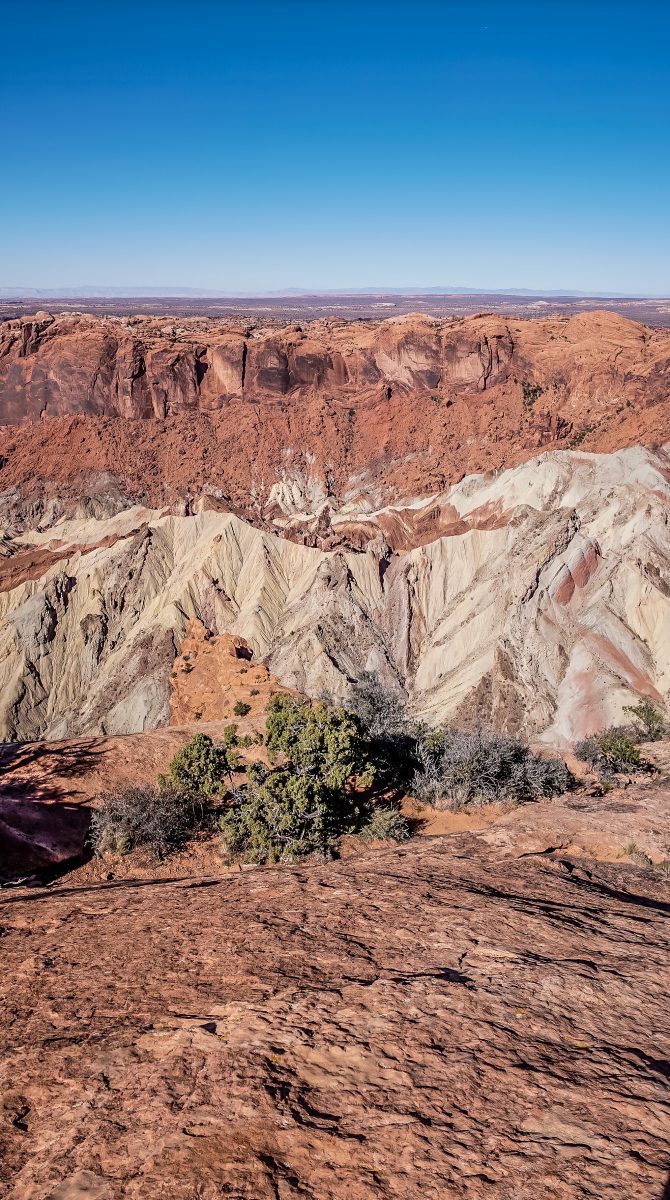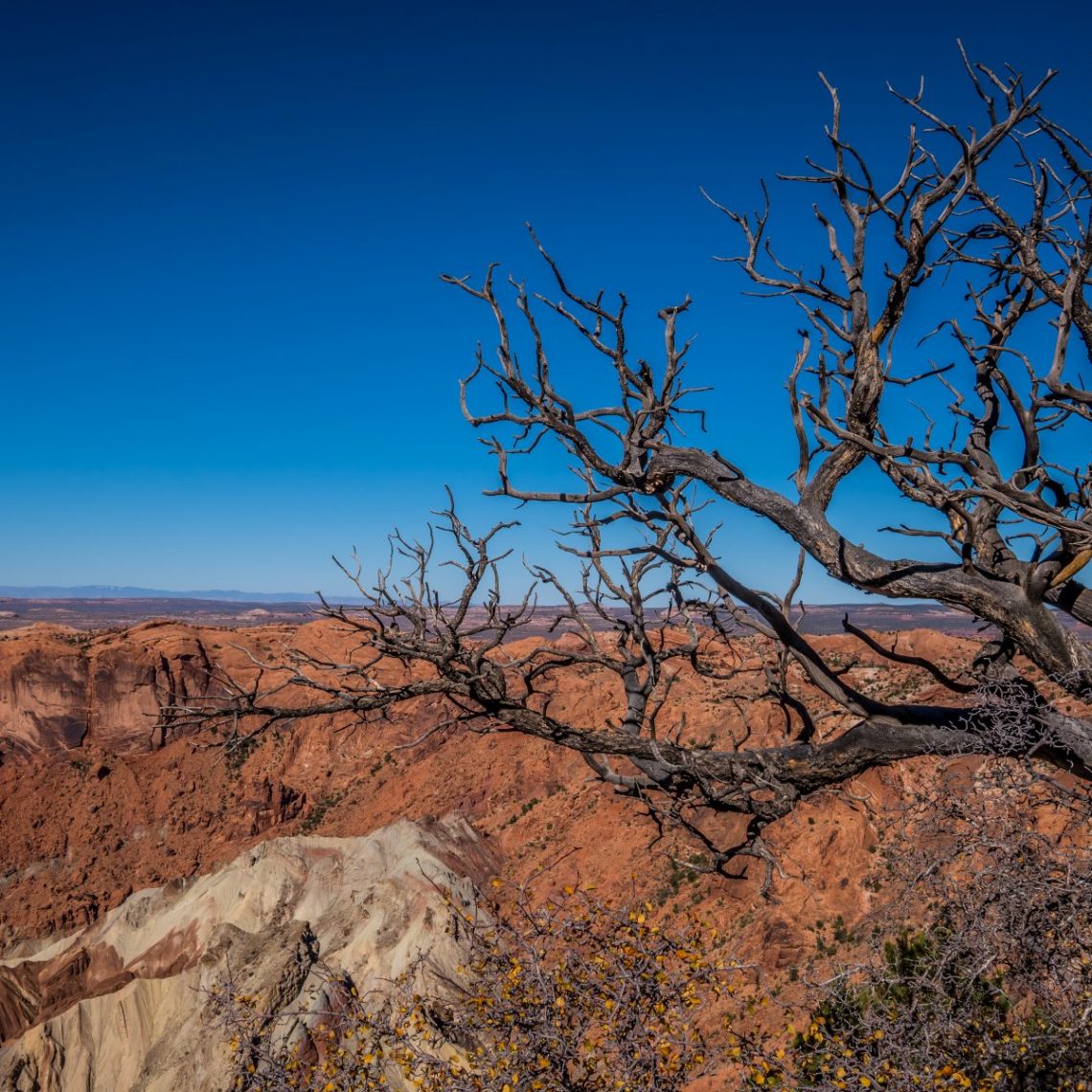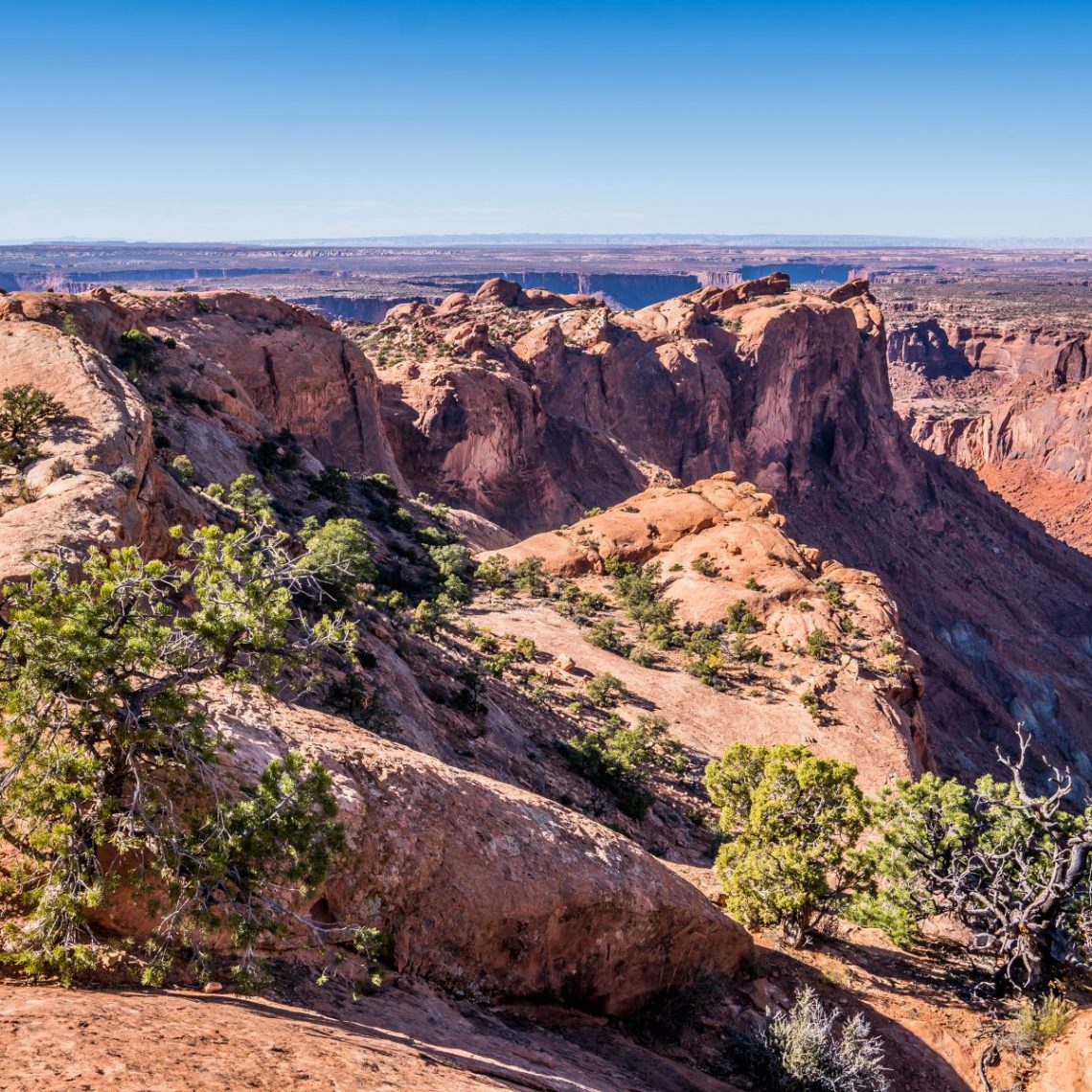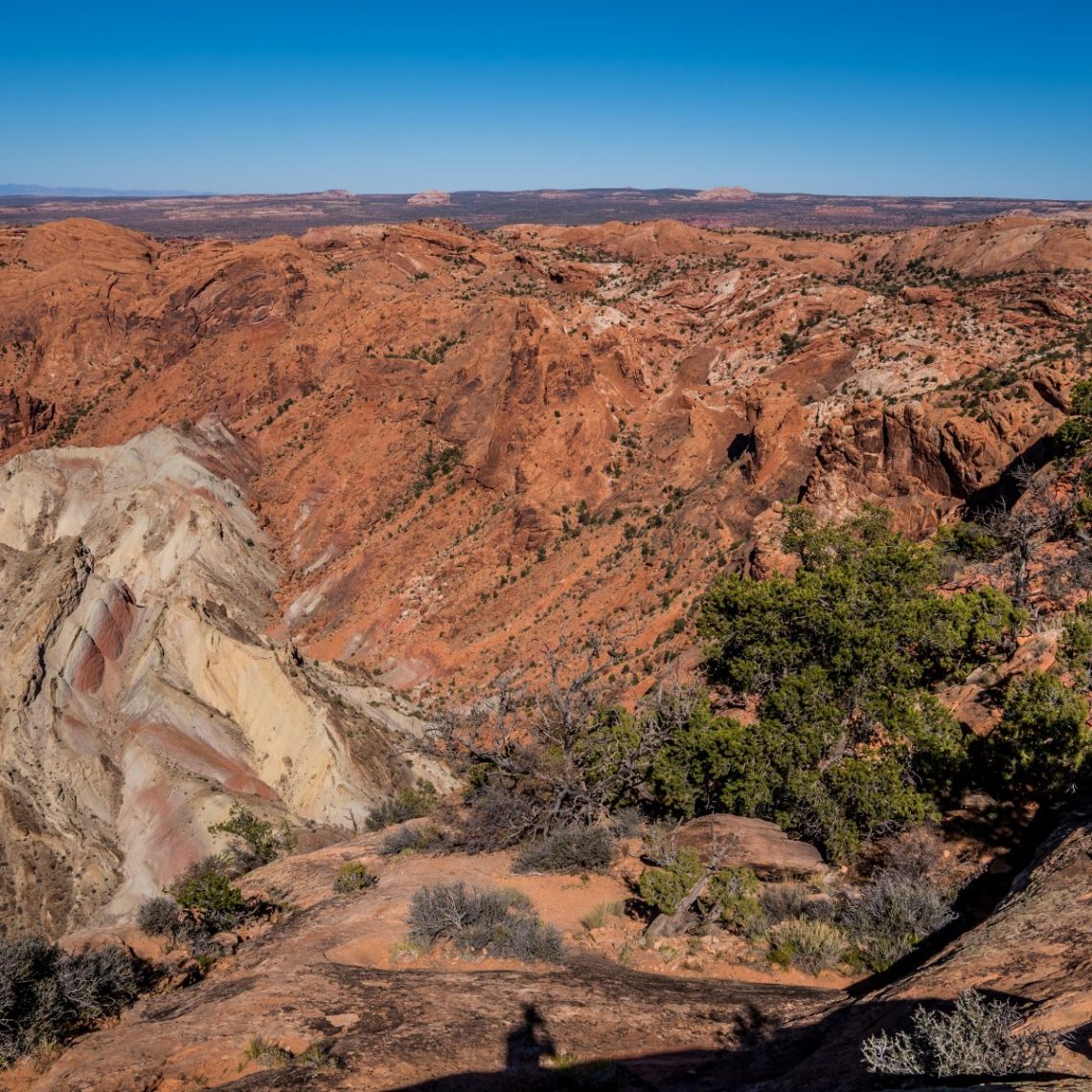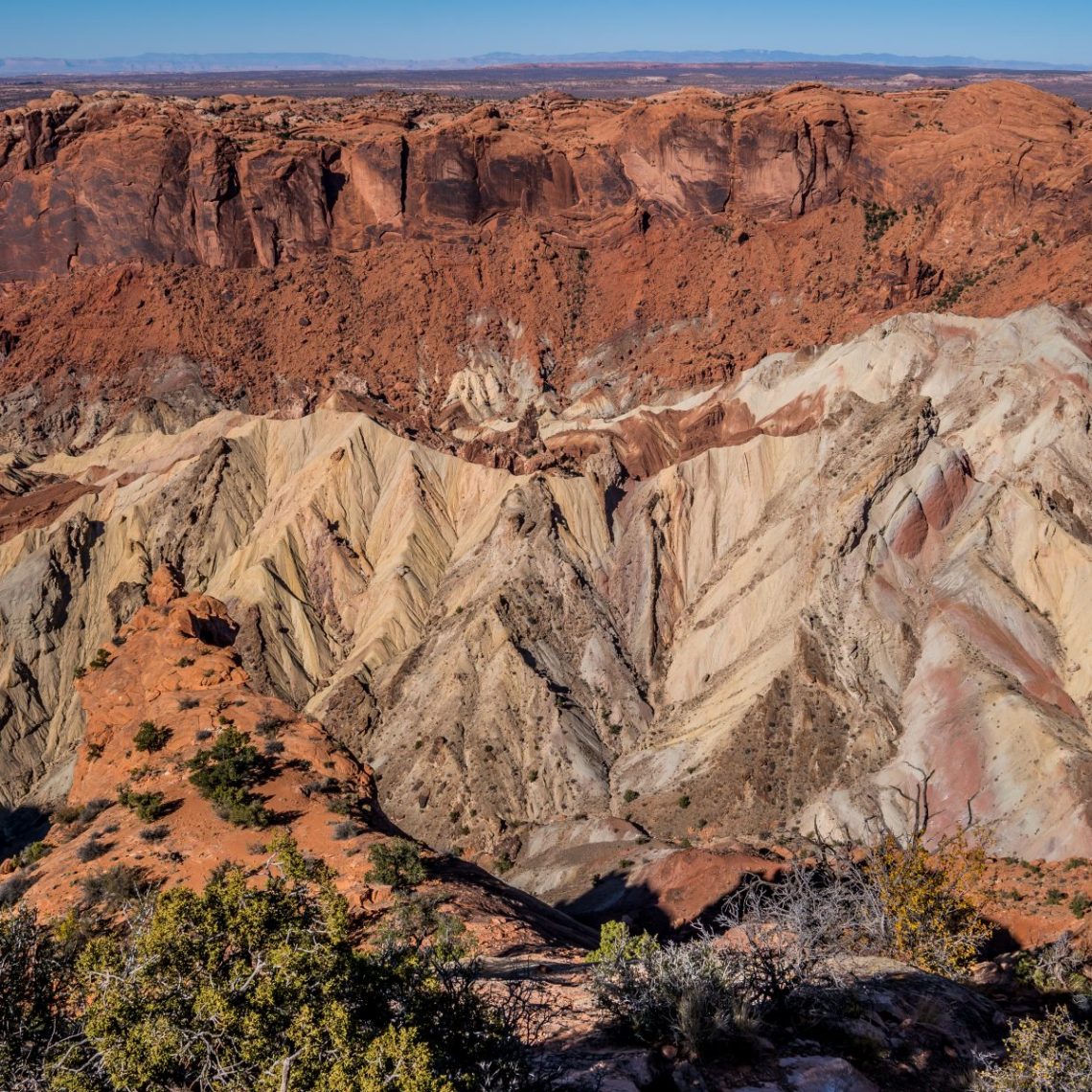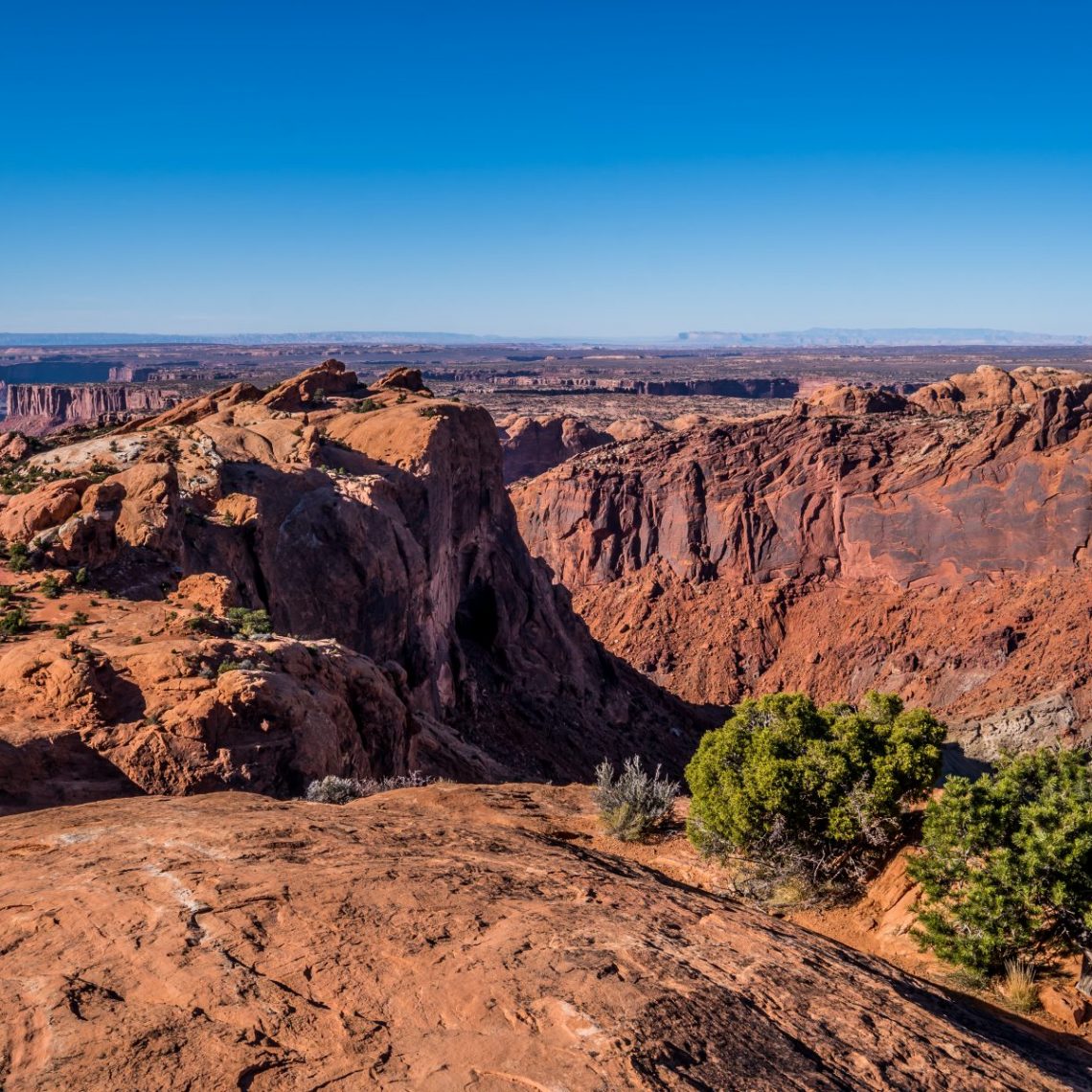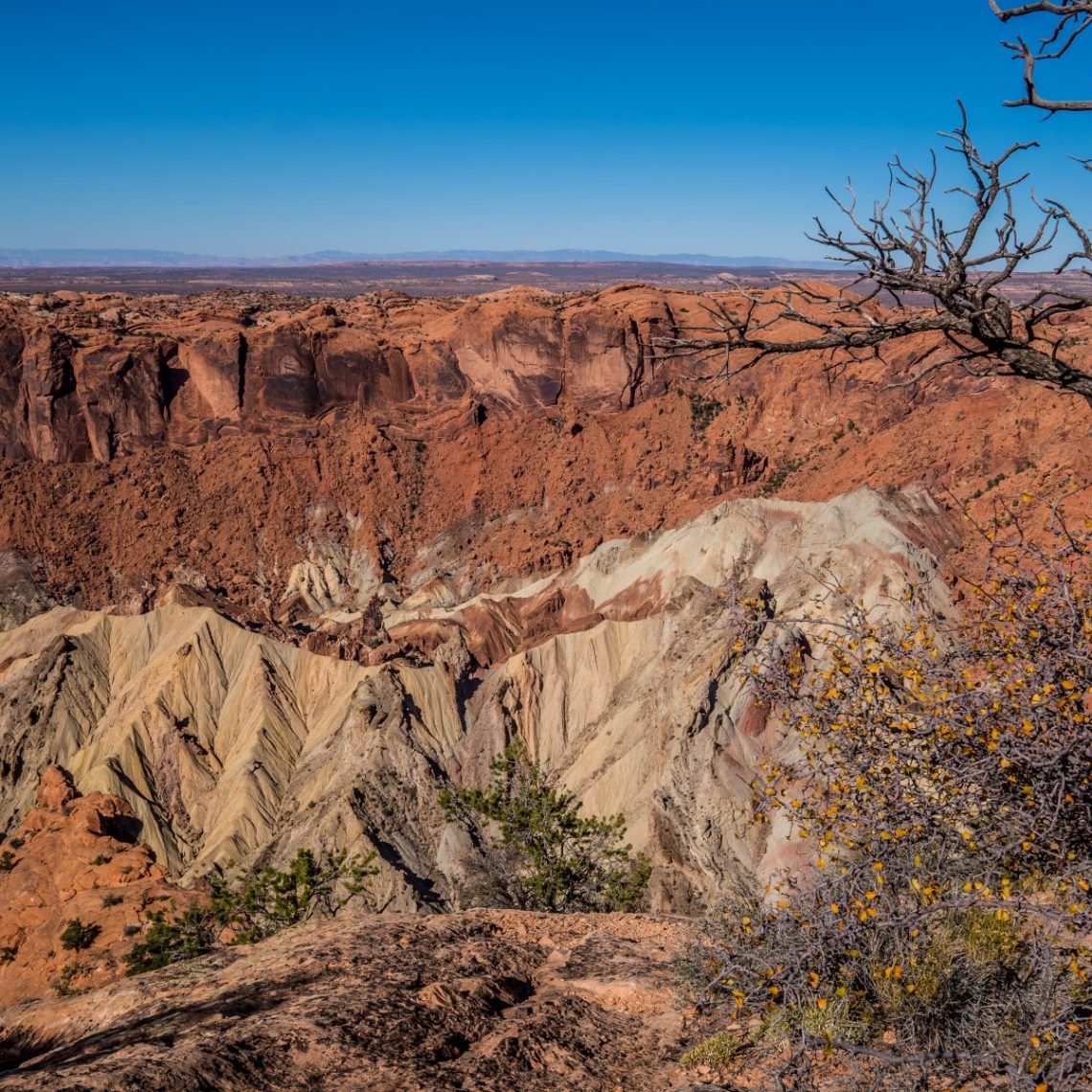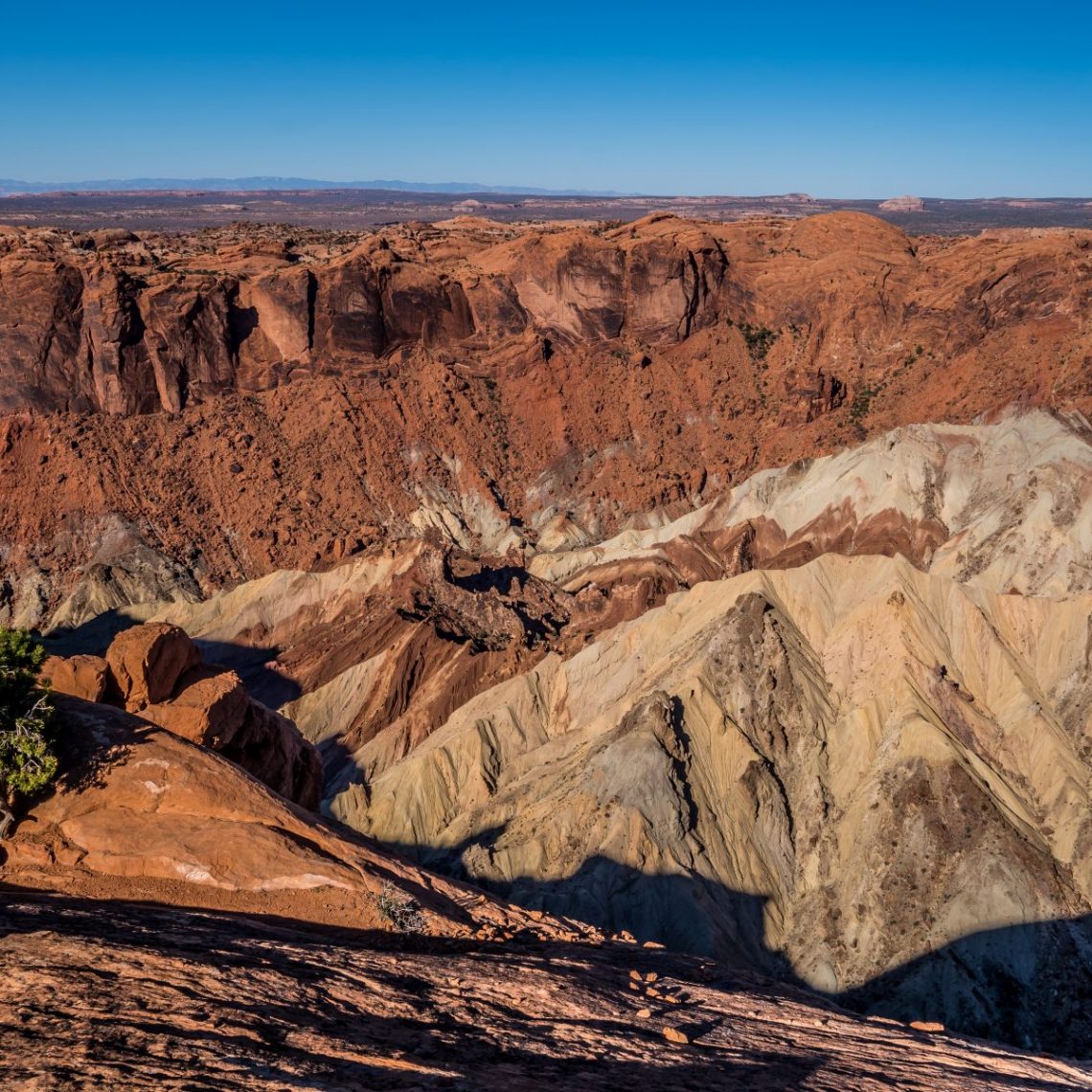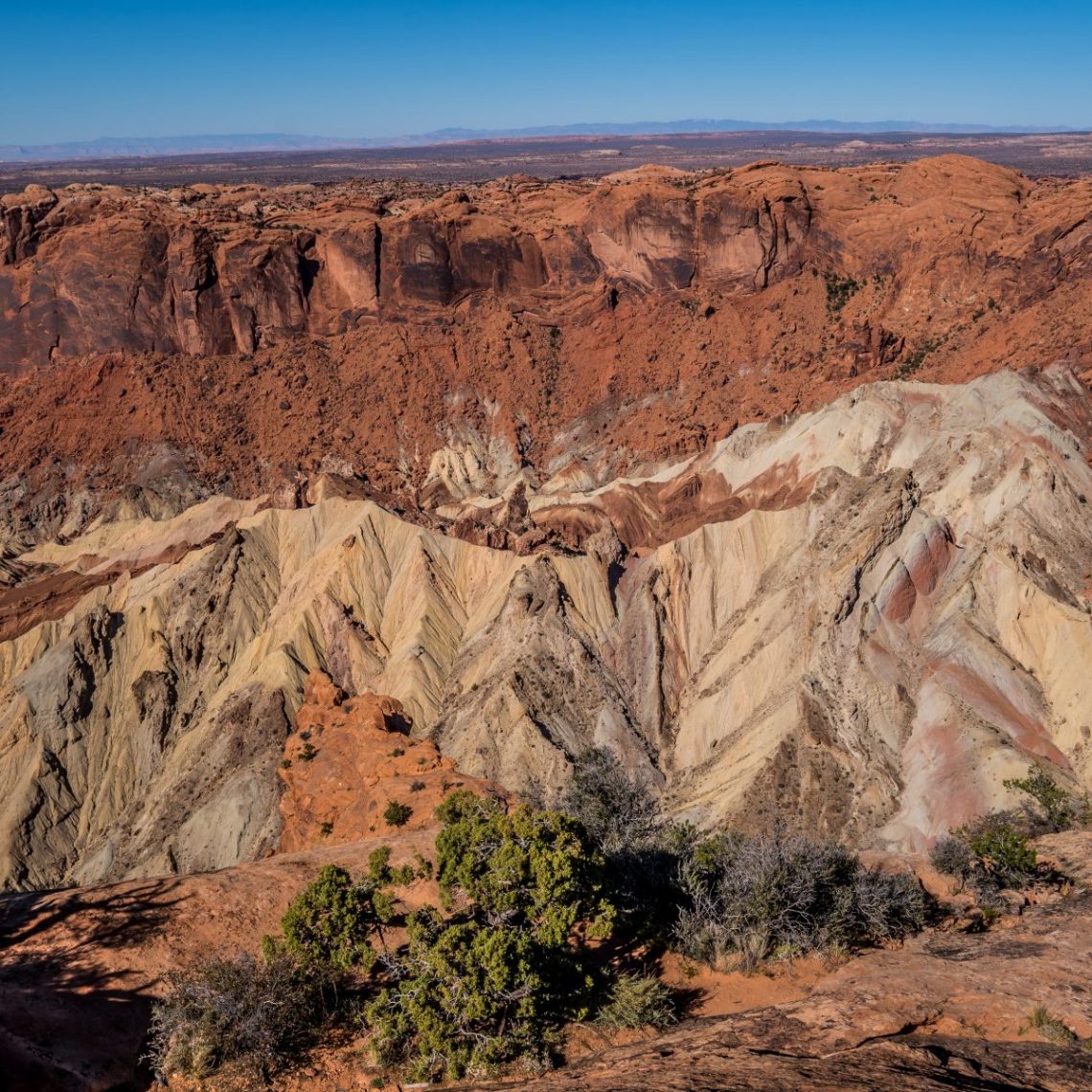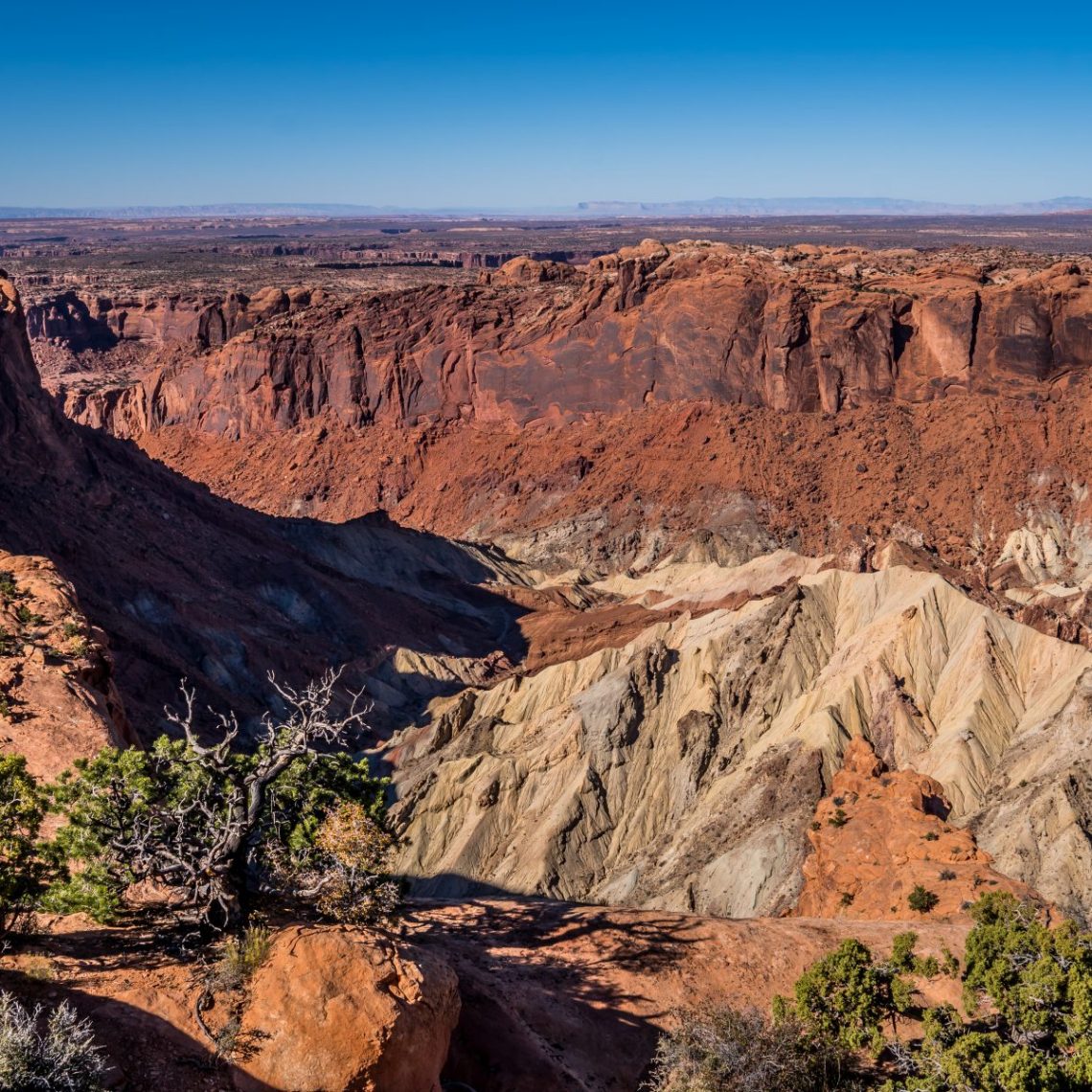A few weeks before making my way to Utah from Colorado on my road trip to visit all of the National Parks, I did something that I often do to discover new places: I “flew around” Utah using Google Maps. While exploring Utah via satellite imagery I noticed an oddly shaped feature (among thousands of other oddly shaped features in Utah) that looked like it might be a meteor crater. I didn’t see any roads leading to it, and it wasn’t showing any information about it on Google Maps, so I pinned the location and decided that I was going to hike to it when I got to Utah.
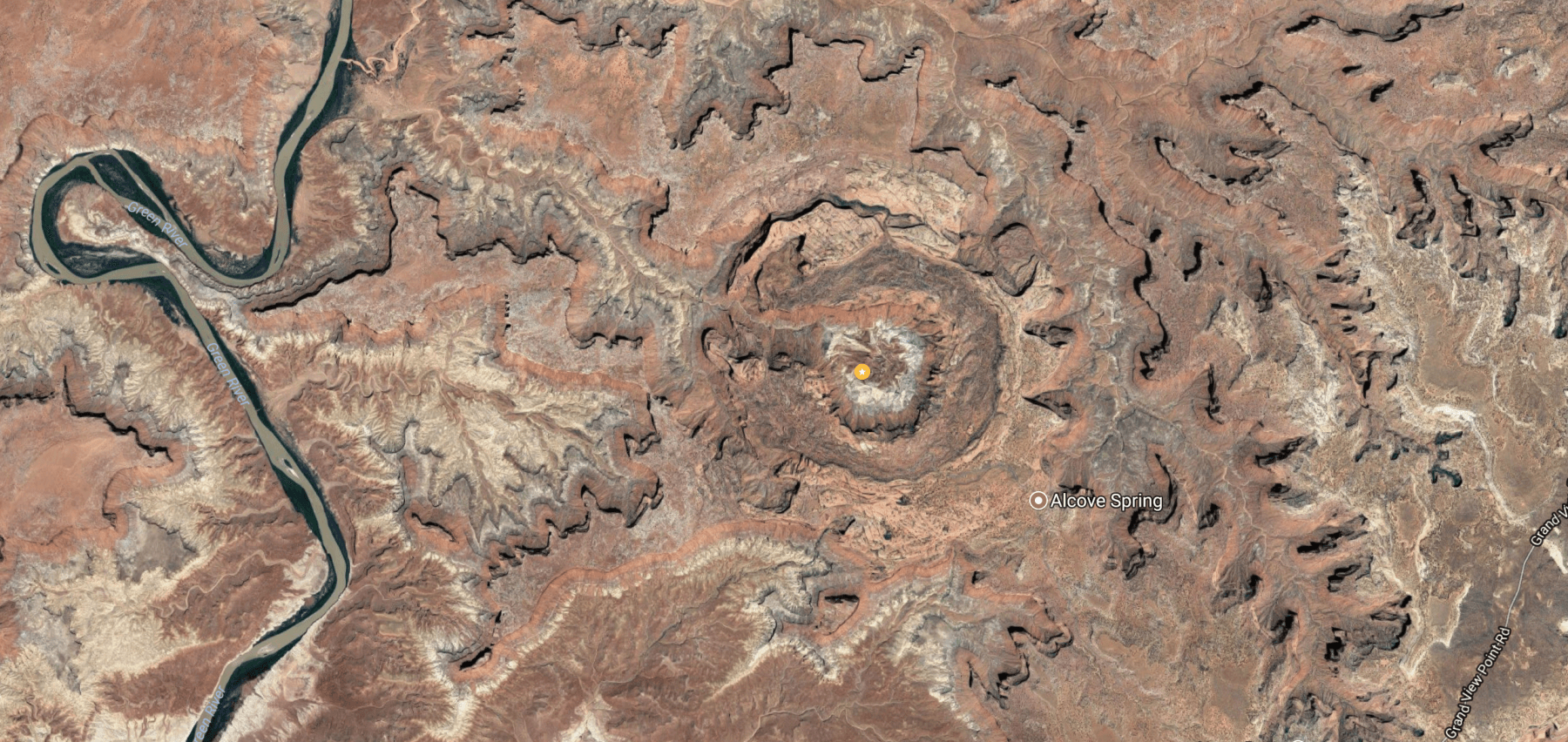
A few weeks later I had made my way to Moab, Utah, and found myself at the Canyonlands National Park visitor center. The first thing I noticed on display was information about Upheaval Dome, and I immediately recognized it as the feature that I’d pinned on the map! I was pretty excited to see that not only was it inside the National Park, but that there is a road that leads almost directly to the rim of this geological oddity. I immediately made my way to Upheaval Dome to see it for myself.
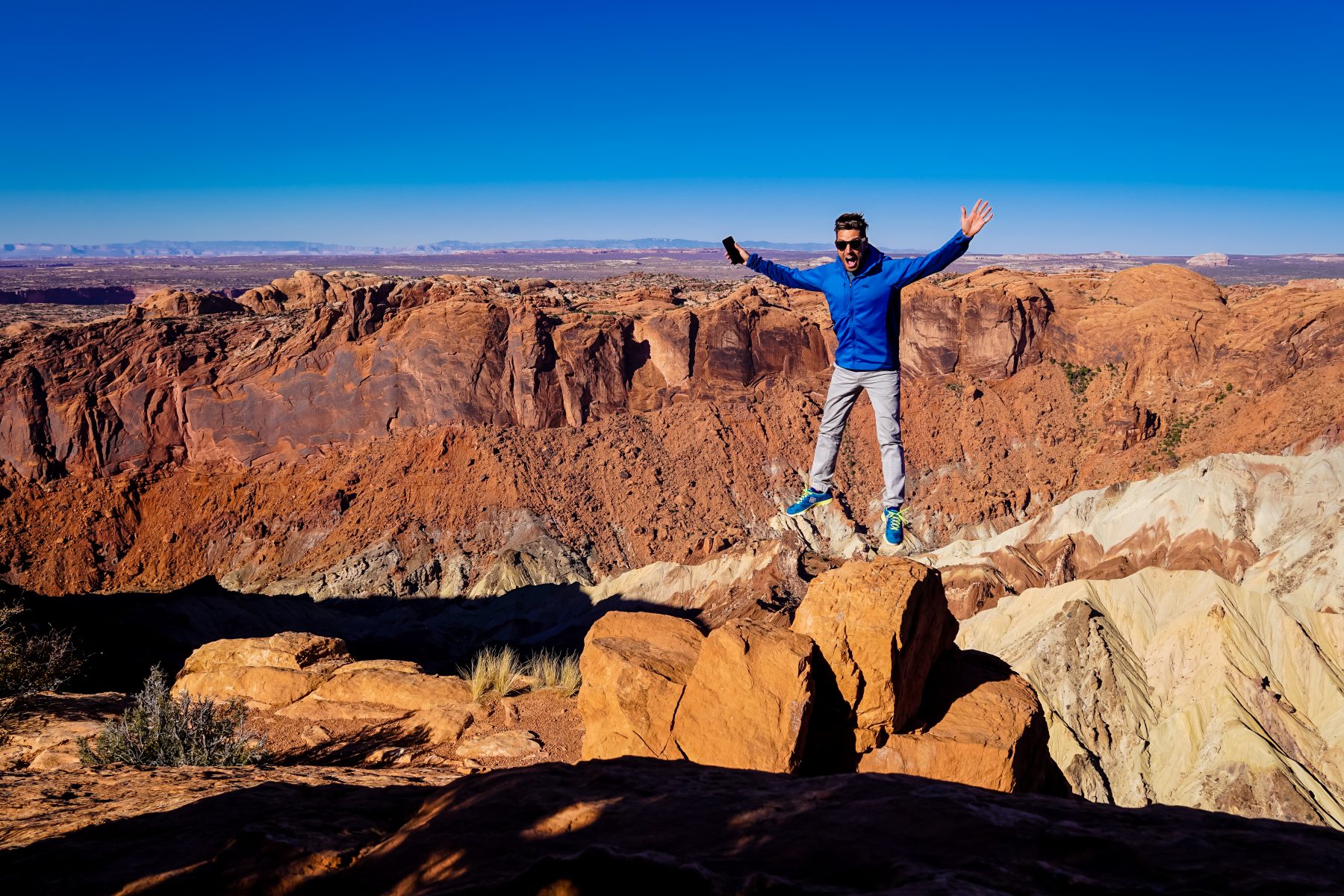
The most strongly supported theory about the origin of Upheaval Dome is that it is a meteor or asteroid impact crater. The circular shape, the concentric ridges and the upturned strata of Upheaval Dome are quite similar to other eroded impact craters. So far, no meteor debris has ever been found at Upheaval Dome – most likely because the impact occurred around 60 million years ago, and any meteor debris would have eroded away long ago. However, shocked quartz grains and shatter cone structures have been found near the center of the crater. Shatter cones and shocked quartz are both rare geological features that are only known to form beneath meteorite impact craters (or underground nuclear explosions). Additionally, seismic surveys detected subsurface fracturing in the rock that decreases in intensity with depth and is consistent with fractures that are found underneath other meteorite impact craters.

Upheaval dome is an unbelievable thing to see in person. It’s THREE MILES across and over 1,000 feet deep. When I arrived at the rim of the crater I was completely speechless. I wasn’t expecting anything so massive, or so incredibly beautiful. I was so astonished by it that I spent 6 hours exploring the south rim of the crater.

To try to give you a sense of scale of how massive the crater is, in the above photo the dark burgundy colored sandstone cliffs on the Northwest Rim are more than 3 miles away from where I was sitting.
I promised myself that I would hike to the inside of the crater, but I never managed to accomplish it while I was in Moab, so now I have a reason to go back. The trail from the top of the rim to the inside of Upheaval Dome, and back again on the other side, is called the Syncline Loop Trail. The hike is considered extremely difficult and dangerous, and is only recommended for very experienced hikers. It takes at least 9 hours (more for people like me who take hundreds of photos!) to complete, and you’ll hike 10 miles.
My time at Upheaval Dome was incredible. It was the quietest place that I’ve ever experienced. It was so quiet in fact, that I could hear my own ears “ringing” slightly in my head; something that I’ve never heard prior, or since. It wasn’t the sound that you hear when your ears ring; it was a sound that I can’t explain. The silence of this place was so deep that you could literally feel it. I’m excited to go back!
Additional photos of Upheaval Dome:
For more of my adventures in Canyonlands National Park, check out my post: Driving through Intrepid Potash Mine & Shafer Canyon Road



